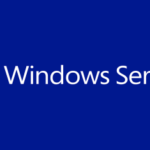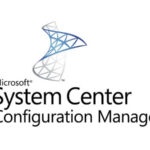Today we install Windows Server 2016 Standard Edition. This installation in the future will host SCCM SQL. I make some preparation – download Windows Server 2016 *.iso and create a “Máquina virtual" (VM).
1. Start VM and press Space when the message Press any key to boot from CD or DVD appears;

2. Set your Idioma, Currency format, and Keyboard. Haga clic en el Próximo botón;

3. Hacer clic Instalar (we don’t need to repair);
4. Selecciona tu Edition y Deployment Type.
If you choose the Server Core Installation option
With this option, the standard user interface (the “Server Graphical Shell”) is not installed; you manage the server using the command line, WindowsPowerShell, or by remote methods.
- User interface: command prompt (Server Graphical Shell is not installed)
- Instalar, configure, and uninstall server roles locally: at a command prompt with Windows PowerShell.
- Instalar, configure, and uninstall server roles remotely: with Server Manager, Herramientas de administración de servidores remotos (Fusil), or Windows PowerShell. Note For RSAT, you must use the Windows 8 versión.
- Microsoft Management Console: not available locally.
- Experiencia de escritorio: not available.
- Server roles available:
- Active Directory Certificate Services
- Servicios de dominio de Active Directory
- DHCP Servidor
- DNS Servidor
- File Services (including File Server Resource Manager)
- Active Directory Lightweight Directory Services (AD LDS)
- Hiper-V
- Print and Document Services
- Streaming Media Services
- Servidor web (including a subset of ASP.NET)
- Windows Server Update Server
- Active Directory Rights Management Server
- Routing and Remote Access Server and the following sub-roles:
- Remote Desktop Services Connection Broker
- Licensing
- Virtualization
If you choose the Server with a GUI option
With this option, the standard user interface and all tools are installed. Server roles and features are installed with Server Manager or by other methods.
- User interface: standard graphical user interface (“Server Graphical Shell”). The Server Graphical Shell includes the new Windows 8 shell but does not include the Windows Store or support for Windows Store apps. To enable support for the Windows Store and Windows Store apps, install the Desktop Experience feature.
- Instalar, configure, and uninstall server roles locally: with Server Manager or with Windows PowerShell Instalar, configure, and uninstall server roles remotely: with Server Manager, Remote Server, Fusil, or Windows PowerShell
- Microsoft Management Console: instalado
- Experiencia de escritorio: installable with Server Manager or Windows PowerShell
- To convert to a Server Core installation with Windows PowerShell: run the following cmdlet: Uninstall-WindowsFeature Server-Gui-Mgmt-Infra -Restart
If you initially install with the Server with a GUI option and then use the above command to convert to a Server Core installation, you can later revert to a Server with a GUI installation without specifying a source. This is because the necessary files remain stored on the disk, even though they are no longer installed. For more information, and for instructions to completely remove the Server with GUI files from the disk, see the “Features on Demand” section of this document.
If you convert to a Server Core installation, Windows features, server roles, and GUI management tools that require a Server with a GUI installation will be uninstalled automatically. You can specify the -WhatIf option in Windows PowerShell to see exactly which features will be affected by the conversion.
I’m selecting Servidor Windows 2016 Standard (Experiencia de escritorio).
NOTA: There is no 32-bit Windows Server 2016, only 64-bit architecture.
After selecting click Próximo botón;

5. Read and set the check mark at Acepto los términos de la licencia y haga clic en el Próximo botón;
6. Seleccionar Custom: Install Windows only (advanced);

7. Select the target Disk and click the Próximo botón;

8. Installation begins;
9. When the installation is complete you get a message about the restart, click Restart now button or wait (the system restarts itself);
10. Enter the password for the built-in user Administrador y haga clic en el Finalizar botón;
11. System installed and you can login-in (Ctrl+Alt+Eliminar);



















